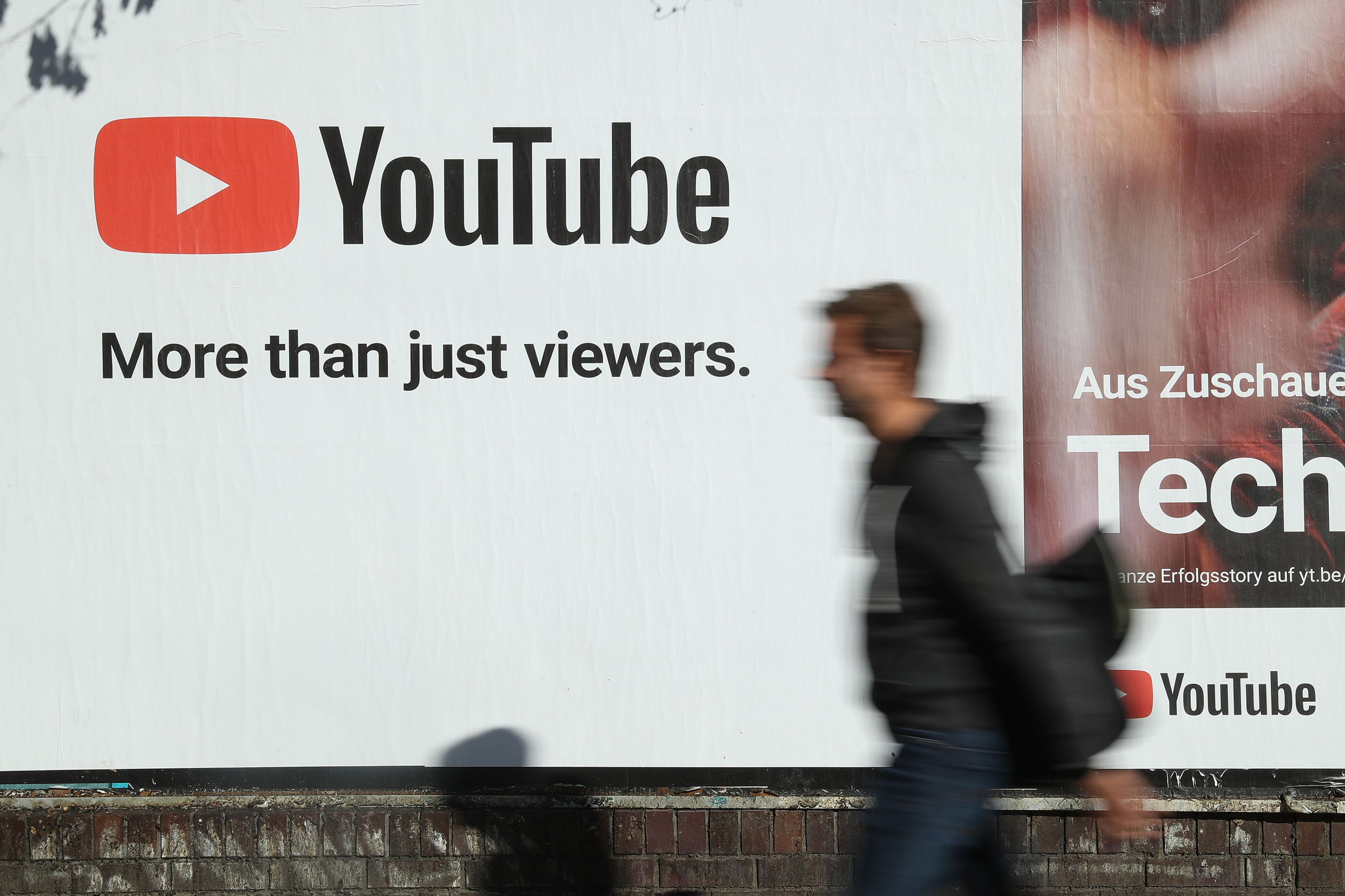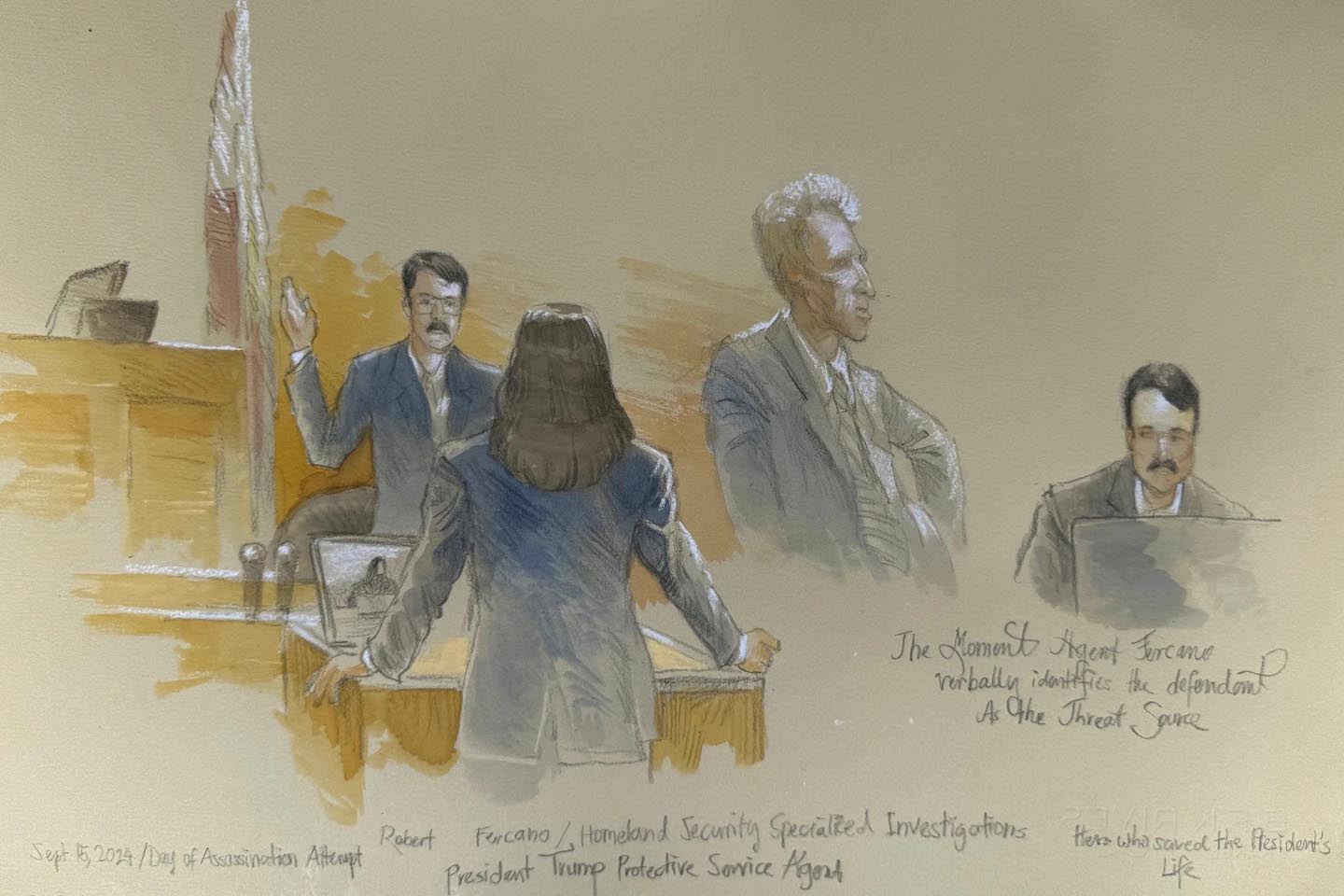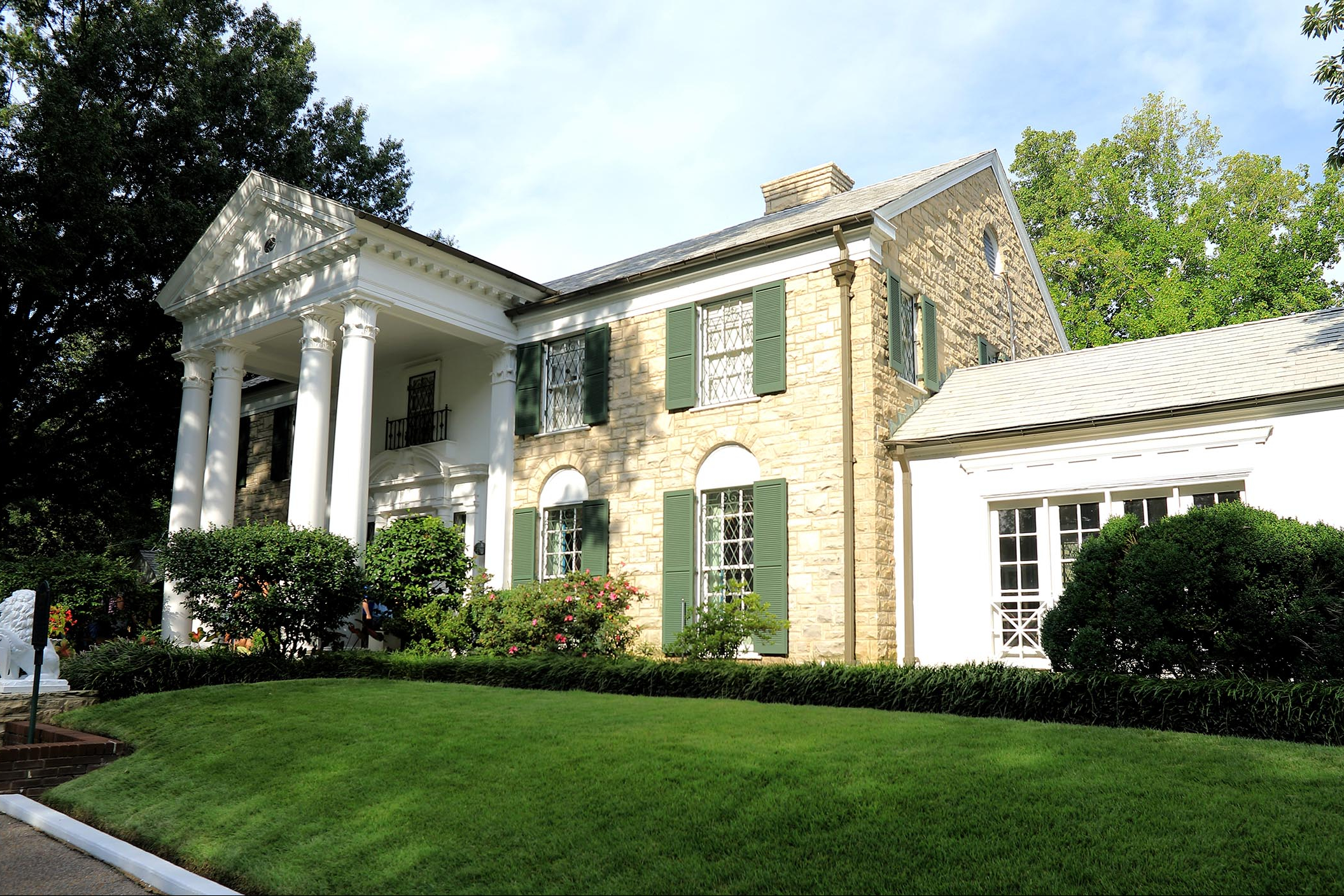Thought of the Day

A man grows most tired while standing still: It’s better to be active than to do nothing.


A man grows most tired while standing still: It’s better to be active than to do nothing.

By MIKE RALEY WPTF Weekend Gardener
I planted some Russian Sage (Salvia yangii) decades ago. Alas, I can’t remember when it faded into oblivion. It is really not native to Russia and hails from Central Asia, ie, Afghanistan, Tibet. The name derives from the genus of the plant which is “perovskia” and it was named for the Russian General V.A. Perovski in the 1800’s. I don’t know why, I suppose he was some sort of wise person or “sage”.
I do love the color contrast between the silvery-green foliage and the bluish-lavender flowers, so I am inspired to plant a new batch of this perennial. You see, on my daily walk as I take note of my neighbor’s landscapes, I attempt to assess the variety of plants with the seasonal progress and changes of each. My friend Charlie has a lovely yard of zoysia interspersed with interesting flowers, shrubs and trees. He has a group of Russian Sage planted in full sun near the sidewalk. This summer on my late afternoon walks I was struck by the sight of sleeping bumble bees. I know they take naps and sleep overnight. I, however, had never paid attention to them clinging to a plant in small colonies. I’ve always heard they can be stroked gently, but I’ve just never dared to attempt it. I don’t want to disturb them. They work hard everyday and deserve their rest. At any rate, the sage and bumble bee combination paints quite a picture. Now I must try my luck once again.
Russian Sage requires full sun, (at least 6 hours) to thrive and to give you the full effect of its foliage and flower color which can be subtle from a distance and striking up close. However, planted in mass, this plant can be remarkable. It likes well drained soil which will prevent root rot. Except for this malady, there really nothing else in the way of disease or insect problems with this plant. It is even deer resistant.
Many people plant Russian Sage in the spring when there is abundant inventory at their favorite garden center. Fall is a great time too, when you can often find perennials on sale. Plant your Russian Sage by using a sharp shovel. Anne Clapp and Rufus always recommend that. Dig a hole that is at least twice as wide as the root ball and just as deep. Place your shrub in the hole, gently spreading out the roots, and then backfill to ground level or slightly above and water well. To get your plant off to a good start, incorporate some organic matter in the soil, and cover the root zone with a layer of mulch to help keep the soil cool and moist even though the Russian Sage thrives in the hot weather.
There are a bunch of varieties of Russian Sage from which to choose. Among the favorite cultivars that can be grown successfully in the Tar Heel state are: “Blue Spire”, “ Little Spire”, “Denim ‘N Lace” “Rocket Man”, “Blue Haze”, ”Blue Spire” and “Crazy Blue”.
The North Carolina Extension Gardener Toolbox available online is an extraordinary resource and can supply you with all the information you may need on the Russian Sage or any other plant you can imagine. All of the Cooperative Extension Service folks on the Weekend Gardener swear by this catalog of knowledge. So, to summarize, Russian Sage
is an exceptional, sun loving plant for North Carolina that is named after a Russian general, but is not native to Russia, and bumblebees love this plant for a nap or a long sleep. Go find one for your yard!

By GARY D. ROBERTSON Associated Press
RALEIGH, N.C. (AP) — In response to the stabbing death of a Ukrainian refugee on Charlotte’s light rail system, the North Carolina legislature gave final approval Tuesday to a criminal justice package that limits bail and seeks to ensure more defendants undergo mental health evaluations.
The Republican-penned bill also could help restart executions in the state.
The House voted 81-31 to accept the omnibus measure passed by the Senate on Monday, sending it next to Democratic Gov. Josh Stein. Stein, a former attorney general, has said he supports some pretrial reforms following the fatal Aug. 22 attack upon 23-year-old Iryna Zarutska.
It wasn’t immediately clear whether Stein would sign the bill into law or veto it. A Stein spokesperson said he was reviewing the measure.
The attack suspect, Decarlos Brown Jr., had been arrested more than a dozen times and was released earlier this year by a magistrate on a misdemeanor count without any bond. Brown is charged with first-degree murder in state court and a federal count in connection with Zarutska’s death. Both crimes can be punishable by the death penalty.
Brown “should have never been allowed out of the jail. The catch-and-release practices for violent offenders will end today with your support,” Charlotte-area Republican state Rep. Tricia Cotham told colleagues during two hours of House debate. “This heinous act was preventable.”
Public outrage over Zarutska’s death intensified with the release of security video showing the attack on the commuter train, leading President Donald Trump and GOP allies to accuse Charlotte and statewide elected Democrats of promoting soft-on-crime policies.
Much of the bill entitled “Iryna’s Law” focuses on eliminating cashless bail for many crimes, limiting the discretion that magistrates and judges have in making pretrial release decisions, and laying out when offenders should be examined for possible involuntary commitment.
Brown’s mother told media outlets that her son has been diagnosed with schizophrenia.
Several House Democrats took issue with the soft-on-crime label, pointing out that Republicans have controlled the General Assembly for over a decade. They said the bill falls well short in providing mental health services that advocates say could stop crimes before they occur, as well as funds to hire additional police officers and crisis responders and to house defendants being held for behavioral problems.
“Tough on crime doesn’t only mean let’s pay attention to punishment after the fact,” said Democratic Rep. Marcia Morey of Durham, a former judge. “We grieve the murder. It was senseless, it was horrible. But what you are voting on today does nothing to take it back or would have prevented it. Let’s get smart on crime.”
Unlike Monday’s party-line Senate vote, over one-third of House Democrats present joined all Republicans in voting for the bill Tuesday. The margins signal a Stein veto could be overridden.
The bill initially contained language that would require certain appeals for death-row inmates be heard and reviewed by courts by the end of 2027. More than 120 people are on death row in North Carolina, but an execution hasn’t been carried out since 2006.
But an amendment from powerful Senate leader Phil Berger would direct the state Adult Correction Department secretary to find another form of execution if lethal injection — currently the state’s sole method — is declared unconstitutional or is “not available,” potentially if the drugs can’t be accessed.
The secretary would have to select another method that’s been adopted by another state. That could include the use of a firing squad, a method used to execute South Carolina inmates twice this year, or perhaps electrocution.
Capital punishment has been put on hold in North Carolina in part over legal challenges on the use of the injection drugs. Inmate challenges also have occurred under a now-repealed law that has allowed some prisoners to receive life without parole if they could show racial bias was the reason for their death sentence.
“For nearly two decades, judicial and administrative roadblocks have stopped true justice for victims, and it’s time for that to end,” Berger said in a news release Monday.
Democrats blasted Berger’s addition, saying it’s wrong and cynical to use the measure to push what one lawmaker called “barbaric” punishments to take someone else’s life.
“No matter what you think about the death penalty more generally, there’s just no question that these methods are risky and have the potential to be extremely gruesome,” said Democratic Rep. Vernetta Alston, an attorney who previously represented death-row inmates in appeals.
The bill was approved while lawmakers returned this week to continued fallout from not having passed a budget for the ninth-largest U.S. state.
The new fiscal year began July 1. State law and a stopgap spending measure have kept North Carolina government operating.
But the state Department of Health and Human Services said $600 million in additional Medicaid funds included in the stopgap measure still left a $319 million shortfall. The agency said it would have to cut Medicaid provider reimbursement rates on Oct. 1 unless lawmakers provided more.
House and Senate Republicans approved competing measures that located more Medicaid money, but they couldn’t agree. The Senate plan includes funding it contends was previously agreed upon for building a standalone children’s hospital near Raleigh and rural health care.
The legislature now doesn’t plan to return to Raleigh until Oct. 20.

By ERIC OLSON AP College Football Writer
As the clock was winding down in a second straight game during which Archie Wilson didn’t attempt a punt, Nebraska coach Matt Rhule came up with an idea to get the freshman on the field for the first time at Memorial Stadium.
When the Cornhuskers went into victory formation to finish a 52-point win over Houston Christian on Sept. 13, Wilson was out there as the deep man behind the running backs.
Wilson ended up punting four times in last week’s loss to Michigan, but his relative inactivity in the previous two games was a sign of the times.
The punt is in decline.
Football Bowl Subdivision teams are averaging 3.8 punts per game, a figure on track to be the lowest since the NCAA began keeping the statistic in 1937. Punt attempts have dropped for eight straight seasons, and the 2024 average of 4.1 was one full punt per game less than in 2015.
The college numbers mirror those in the NFL, where the average of 3.6 per game is lowest in history.
The sport’s growing reliance on analytics has encouraged coaches to be aggressive on fourth down. Also, field goals from long distances are on the rise. There were six field goals of 60-plus yards in the FBS last season, the most since 1977, and there has been one this season. There have been 52 field goals from 50-59 yards, on pace to match the record 188 last year.
The picks for this week’s FBS vs. FBS games, with Associated Press Top 25 rankings and lines from BetMGM Sportsbook:
Washington has scored touchdowns on 23 of its 29 drives over three games. Ohio State has allowed two TDs over 34 series. First meeting since the 2019 Rose Bowl, where Buckeyes held on to win Urban Meyer’s final game as coach.
Pick: Ohio State 31-21.
Penn State can make a statement after getting skewered for its light nonconference schedule. Ducks have won eight straight on the road, and it’s hard to imagine they’ll be intimidated by the White Out in this Big Ten championship game rematch.
Pick: Oregon 26-22.
Rebels offense has been prolific with QB Trinidad Chambliss filling in for Austin Simmons. Coach Lane Kiffin hasn’t announced a starter for this week. LSU has one of the nation’s most stout defenses, but the home team gets the nod.
Pick: Mississippi 28-24.
Georgia has won a nation-best 33 straight home games since 2019. Alabama has won nine of the last 10 in the series. Crimson Tide QB Ty Simpson draws tough assignment for his first start in an SEC game.
Pick: Georgia 28-21.
It’s been a slow build for Tony Elliott and the Cavaliers, and they look at Friday night as a big opportunity after a 3-1 start. The Seminoles lead the nation in scoring, and QB Tommy Castellanos expects to be back after leaving last week’s game with a leg injury.
Pick: Florida State 42-28.
Texas A&M has had two weeks to come down from its emotional one-point win at Notre Dame. Auburn is on the road a second straight week against a ranked opponent. Aggies’ front seven will be licking chops after Oklahoma recorded nine sacks against the Tigers last week.
Pick: Texas A&M 30-21.
Indiana’s Fernando Mendoza is the hottest QB in the country and Curt Cignetti doesn’t know how to tap the brakes on his offense. Iowa gave up 330 yards passing to Rutgers last week, the most allowed by the Hawkeyes in four years.
Pick: Indiana 38-14.
Cyclones QB Rocco Becht will have to be at his best against the nation’s top pass efficiency defense. The Wildcats, 3-0 for first time since 2014, have picked off five passes and haven’t given up a touchdown through the air.
Pick: Iowa State 24-21.
Bulldogs have greatly improved their pass defense, but it’s a big ask to keep Joey Aguilar under wraps when the MSU pass rush has recorded just 1.25 sacks per game. MSU’s offense won’t be able to keep up.
Pick: Tennessee 37-24.
The Yellow Jackets have overcome turnovers and a rash of penalties to win four straight, and a balanced offense averaging 8.1 yards per play should keep chugging along.
Pick: Georgia Tech 35-17.
Vanderbilt has scored no fewer than 31 points, averages 47.5 per game and just hung 70 on Georgia State for its highest total since 1918. Utah State is 1-13 all-time against the SEC and hasn’t beaten a power-conference opponent since 2021.
Pick: Vanderbilt 45-20.
RB Ahmad Hardy has four straight 100-yard games and is second nationally at 150 per game. He’ll probably sit down for the day after getting his obligatory 100 against the overmatched Minutemen. Mizzou won 45-3 in Amherst last year.
Pick: Missouri 45-0.
Illinois gets a double whammy having to face the Trojans right after being humiliated 63-10 by Indiana. Like Fernando Mendoza, USC’s Jayden Maiava puts up big numbers and is complemented by a strong run game.
Pick: USC 33-21.
The Irish made some personnel adjustments in their secondary after allowing 300 yards passing two straight games. Arkansas’ Taylen Green has thrown for over 300 in his last two. Turnovers have been a bugaboo for the Razorbacks.
Pick: Notre Dame 33-28.
The Friday night game features two of the Big 12’s most exciting passing combination in TCU QB Josh Hoover and WR Eric McAlister and ASU’s Sam Leavitt and Jordyn Tyson.
Pick: Arizona State 45-40.
This is a rematch of the 2024 Alamo Bowl, which BYU won 36-14 in an all-Big 12 matchup. The Cougars are on the road a second straight week after going across the country to play East Carolina last week.
Pick: BYU 27-24.
Byes: No. 2 Miami, No. 7 Oklahoma, No. 10 Texas, No. 12 Texas Tech, No. 19 Michigan.
Last week: Straight-up — 14-1; Against spread — 7-8.
Season: Straight-up — 56-7; Against spread — 32-31.

NEW YORK (AP) — YouTube will offer creators a way to rejoin the streaming platform if they were banned for violating COVID-19 and election misinformation policies that are no longer in effect, its parent company Alphabet said Tuesday.
In a letter submitted in response to subpoenas from the House Judiciary Committee, attorneys for Alphabet said the decision to bring back banned accounts reflected the company’s commitment to free speech. It said the company values conservative voices on its platform and recognizes their reach and important role in civic discourse.
“No matter the political atmosphere, YouTube will continue to enable free expression on its platform, particularly as it relates to issues subject to political debate,” the letter read.
The move is the latest in a cascade of content moderation rollbacks from tech companies, who cracked down on false information during the pandemic and after the 2020 election but have since faced pressure from President Donald Trump and other conservatives who argue they unlawfully stifled right-wing voices in the process.
It comes as tech CEOs, including Alphabet CEO Sundar Pichai, have sought a closer relationship with the Republican president, including through high-dollar donations to his campaign and attending events in Washington.
YouTube in 2023 phased out its policy to remove content that falsely claims the 2020 election, or other past U.S. presidential elections, were marred by “widespread fraud, errors or glitches.”
The platform in 2024 also retired its standalone COVID-19 content restrictions, allowing various treatments for the disease to be discussed. COVID-19 misinformation now falls under YouTube’s broader medical misinformation policy.
Among the creators who have been banned from YouTube under the now-expired policies are prominent conservative influencers, including Dan Bongino, who now serves as deputy director of the FBI. For people who make money on social media, access to monetization on YouTube can be significant, earning them large sums through ad revenue.
House Judiciary Committee Chairman Jim Jordan and other congressional Republicans have pressured tech companies to reverse content moderation policies created under former President Joe Biden and accused Biden’s administration of unfairly wielding its power over the companies to chill lawful online speech.
In Tuesday’s letter, Alphabet’s lawyers said senior Biden administration officials “conducted repeated and sustained outreach” to coerce the company to remove pandemic-related YouTube videos that did not violate company policies.
“It is unacceptable and wrong when any government, including the Biden Administration, attempts to dictate how the Company moderates content, and the Company has consistently fought against those efforts on First Amendment grounds,” the letter said.
Meta CEO Mark Zuckerberg has also accused the Biden administration of pressuring employees to inappropriately censor content during the COVID-19 pandemic. Elon Musk, the owner of the social platform X, has accused the FBI of illegally coercing Twitter before his tenure to suppress a story about Hunter Biden.
The Supreme Court last year sided with former President Joe Biden’s administration in a dispute with Republican-led states over how far the federal government can go to combat controversial social media posts on topics including COVID-19 and election security.
Asked for more information about the reinstatement process, a spokesperson for YouTube did not immediately respond to a request for comment.

These cinnamon rolls are the perfect sweet treat for a cozy fall day.
1. Preheat & Prep
Preheat the oven to 375 degrees (f) and grease or line an 8-inch baking dish or circle pan.
2. Make the Dough
In a large bowl, whisk together the flour, sugar, baking powder and salt. Add the milk and melted butter, stirring until a dough forms. Then, knead gently 3–5 times on a floured surface until smooth.
3. Roll Out the Dough
Roll the dough into a rectangle about 1/4 inch thick.
4. Add Filling
Spread the softened butter over the dough, then sprinkle with brown sugar and cinnamon evenly.
5. Roll & Cut
Roll the dough tightly from the long side. Then, cut it into 8–10 slices using a sharp knife or string.
6. Bake
Place rolls in the greased pan. Then, bake for 20–25 minutes or until lightly golden on top.
7. Add Glaze and Enjoy
Mix powdered sugar, milk, and vanilla until smooth, then drizzle the glaze over the rolls and enjoy this delicious classic!


Courage is knowing it might hurt, and doing it anyway. Stupidity is the same. And that’s why life is hard.

By DAVID FISCHER Associated Press
FORT PIERCE, Fla. (AP) — The man who attempted to assassinate Donald Trump at a Florida golf course last year tried to stab himself in the neck with a pen shortly after being found guilty of all counts on Tuesday.
Officers quickly swarmed him and dragged him out of the courthouse.
The jury of five men and seven women found Ryan Routh guilty on all counts that he was facing after 2 hours of deliberation.
After the jurors were on their way out of the courtroom, Routh tried to stab himself in the neck. He grabbed a pen and started trying to stab himself in the neck. Marshals swarmed him and picked him up and dragged him out of the courthouse.
His daughter Sara Routh was screaming, “Dad I love you don’t do anything. I’ll get you out. He didn’t hurt anybody.”
She continued screaming inside the courtroom as her father was dragged out. She said the case against him was rigged. The daughter went outside the courthouse and was waiting by the guard gate for her father to be driven out and transported to prison.
Routh had been charged with attempting to assassinate a major presidential candidate, possessing a firearm in furtherance of a crime of violence, assaulting a federal officer, possessing a firearm and ammunition as a convicted felon and possessing a firearm with an obliterated serial number. He had pleaded not guilty to the charges and defended himself in court.
Prosecutors said Routh spent weeks plotting to kill Trump before aiming a rifle through shrubbery as the Republican played golf on Sept. 15, 2024, at his West Palm Beach country club.
Routh told jurors in his closing argument that he didn’t intend to kill anyone that day.
“It’s hard for me to believe that a crime occurred if the trigger was never pulled,” Routh said. He pointed out that he could see Trump as he was on the path toward the sixth-hole green at the golf course and noted that he also could have shot a Secret Service agent who confronted him if he had intended to harm anyone.
Routh, 59, exercised his constitutional right not to testify in his own defense. He rested his case Monday morning after questioning just three witnesses — a firearms expert and two characters witnesses — for a total of about three hours. In contrast, prosecutors spent seven days questioning 38 witnesses.
Attorney General Pam Bondi said in a post on X that the guilty verdict “illustrates the Department of Justice’s commitment to punishing those who engage in political violence.”
“This attempted assassination was not only an attack on our President, but an affront to our very nation,” Bondi said.
U.S. District Judge Aileen Cannon signed off on Routh’s request to represent himself following two hearings in July. The U.S. Supreme Court has held that criminal defendants have a right to represent themselves in court proceedings, as long as they can show a judge they are competent to waive their right to be defended by an attorney. Routh’s former defense attorneys have served as standby counsel since he took over his own defense and have been present during trial the past two weeks.
Recounting what happened at the golf course, a Secret Service agent testified earlier in the trial that he spotted Routh before Trump came into view. Routh aimed his rifle at the agent, who opened fire, causing Routh to drop his weapon and flee without firing a shot, the agent said.
Law enforcement obtained help from a witness who testified that he saw a person fleeing the area after hearing gunshots. The witness was then flown in a police helicopter to a nearby interstate where Routh was arrested, and the witness said he confirmed it was the person he had seen.
Just nine weeks earlier, Trump had survived an attempt on his life while campaigning in Butler, Pennsylvania. That gunman had fired eight shots, with one bullet grazing Trump’s ear. The gunman was then fatally shot by a Secret Service counter sniper.
Routh was a North Carolina construction worker who in recent years had moved to Hawaii. A self-styled mercenary leader, Routh spoke out to anyone who would listen about his dangerous and sometimes violent plans to insert himself into conflicts around the world, witnesses have told The Associated Press.
In the early days of Russia’s war in Ukraine, Routh tried to recruit soldiers from Afghanistan, Moldova and Taiwan to fight the Russians. In his native Greensboro, North Carolina, he was arrested in 2002 for eluding a traffic stop and barricading himself from officers with a fully automatic machine gun and a “weapon of mass destruction,” which turned out to be an explosive with a 10-inch (25-centimeter) fuse, police said.
In 2010, police searched a warehouse Routh owned and found more than 100 stolen items, from power tools and building supplies to kayaks and spa tubs. In both felony cases, judges gave Routh either probation or a suspended sentence.
Besides the federal charges, Routh also has pleaded not guilty to state charges of terrorism and attempted murder.

By RONALD BLUM AP Baseball Writer
NEW YORK (AP) — Robot umpires are getting called up to the big leagues next season.
Major League Baseball’s 11-man competition committee on Tuesday approved use of the Automated Ball/Strike System in the major leagues in 2026.
Human plate umpires will still call balls and strikes, but teams can challenge two calls per game and get additional appeals in extra innings. Challenges must be made by a pitcher, catcher or batter — signaled by tapping their helmet or cap — and a team retains its challenge if successful. Reviews will be shown as digital graphics on outfield videoboards.
Adding the robot umps is likely to cut down on ejections. MLB said 61.5% of ejections among players, managers and coaches last year were related to balls and strikes, as were 60.3% this season through Sunday. The figures include ejections for derogatory comments, throwing equipment while protesting calls and inappropriate conduct.
Big league umpires call roughly 94% of pitches correctly, according to UmpScorecards.
“Throughout this process we have worked on deploying the system in a way that’s acceptable to players,” Commissioner Rob Manfred said in a statement. “The strong preference from players for the challenge format over using the technology to call every pitch was a key factor in determining the system we are announcing today.”
ABS, which utilizes Hawk-Eye cameras, has been tested in the minor leagues since 2019. The independent Atlantic League trialed the system at its 2019 All-Star Game and MLB installed the technology for that’s year Arizona Fall League of top prospects. The ABS was tried at eight of nine ballparks of the Low-A Southeast League in 2021, then moved up to Triple-A in 2022.
At Triple-A at the start of the 2023 season, half the games used the robots for ball/strike calls and half had a human making decisions subject to appeals by teams to the ABS.
MLB switched Triple-A to an all-challenge system on June 26, 2024, then used the challenge system this year at 13 spring training ballparks hosting 19 teams for a total of 288 exhibition games. Teams won 52.2% of their ball/strike challenges (617 of 1,182) challenges.
At Triple-A this season, the average challenges per game increased to 4.2 from 3.9 through Sunday and the success rate dropped to 49.5% from 50.6%. Defenses were successful in 53.7% of challenges this year and offenses in 45%.
In the first test at the big League All-Star Game, four of five challenges of plate umpire Dan Iassogna’s calls were successful in July.
Teams in Triple-A do not get additional challenges in extra innings. The proposal approved Tuesday included a provision granting teams one additional challenge each inning if they don’t have challenges remaining.
MLB has experimented with different shapes and interpretations of the strike zone with ABS, including versions that were three-dimensional. Currently, it calls strikes solely based on where the ball crosses the midpoint of the plate, 8.5 inches from the front and the back. The top of the strike zone is 53.5% of batter height and the bottom 27%.
This will be MLB’s first major rule change since sweeping adjustments in 2024. Those included a pitch clock, restrictions on defensive shifts, pitcher disengagements such as pickoff attempts and larger bases.
The challenge system introduces ABS without eliminating pitch framing, a subtle art where catchers use their body and glove to try making borderline pitches look like strikes. Framing has become a critical skill for big league catchers, and there was concern that full-blown ABS would make some strong defensive catchers obsolete. Not that everyone loves it.
“The idea that people get paid for cheating, for stealing strikes, for moving a pitch that’s not a strike into the zone to fool the official and make it a strike is beyond my comprehension,” former manager Bobby Valentine said.
Texas manager Bruce Bochy, a big league catcher from 1978-87, maintained old-school umpires such as Bruce Froemming and Billy Williams never would have accepted pitch framing. He said they would have told him: “’If you do that again, you’ll never get a strike.’ I’m cutting out some words.”
Management officials on the competition committee include Seattle chairman John Stanton, St. Louis CEO Bill DeWitt Jr., San Francisco chairman Greg Johnson, Colorado CEO Dick Monfort, Toronto CEO Mark Shapiro and Boston chairman Tom Werner.
Players include Arizona’s Corbin Burnes and Zac Gallen, Detroit’s Casey Mize, Seattle’s Cal Raleigh and the New York Yankees’ Austin Slater, with the Chicago Cubs’ Ian Happ at Detroit’s Casey Mize as alternates. The union representatives make their decisions based on input from players on the 30 teams.
Bill Miller is the umpire representative.

By ADRIAN SAINZ Associated Press
MEMPHIS, Tenn. (AP) — A Missouri woman was sentenced Tuesday to more than four years in federal prison for scheming to defraud Elvis Presley’s family by trying to auction off his Graceland home and property before a judge halted the brazen foreclosure sale.
U.S. District Judge John T. Fowlkes Jr. sentenced Lisa Jeanine Findley in federal court in Memphis to four years and nine months behind bars, plus an additional three years of probation. Findley, 54, declined to speak on her own behalf during the hearing.
Findley pleaded guilty in February to a charge of mail fraud related to the scheme. She also had been indicted on a charge of aggravated identity theft, but that charge was dropped as part of a plea agreement.
Findley, of Kimberling City, falsely claimed Presley’s daughter borrowed $3.8 million from a bogus private lender and had pledged Graceland as collateral for the loan before her death in January 2023, prosecutors said when Findley was charged in August 2024. She then threatened to sell Graceland to the highest bidder if Presley’s family didn’t pay a $2.85 million settlement, according to authorities.
Findley posed as three different people allegedly involved with the fake lender, fabricated loan documents and published a fraudulent foreclosure notice in a Memphis newspaper announcing the auction of Graceland in May 2024, prosecutors said. A judge stopped the sale after Presley’s granddaughter sued.
Experts were baffled by the attempt to sell off one of the most storied pieces of real estate in the country using names, emails and documents that were quickly suspected to be phony.
Graceland opened as a museum and tourist attraction in 1982 and draws hundreds of thousands of visitors each year. A large Presley-themed entertainment complex across the street from the museum is owned by Elvis Presley Enterprises. Presley died in August 1977 at the age of 42.
The public notice for the foreclosure sale of the 13-acre (5-hectare) estate said Promenade Trust, which controls the Graceland museum, owed $3.8 million after failing to repay a 2018 loan. Actor Riley Keough, Presley’s granddaughter, inherited the trust and ownership of the home after the death of her mother, Lisa Marie Presley.
Keough filed a lawsuit claiming fraud, and a judge halted the proposed auction with an injunction. Naussany Investments and Private Lending — the bogus lender authorities say Findley created — said Lisa Marie Presley had used Graceland as collateral for the loan, according to the foreclosure sale notice. Keough’s lawsuit alleged that Naussany presented fraudulent documents regarding the loan in September 2023 and that Lisa Marie Presley never borrowed money from Naussany.
Kimberly Philbrick, the notary whose name is listed on Naussany’s documents, indicated she never met Lisa Marie Presley nor notarized any documents for her, according to the estate’s lawsuit. The judge said the notary’s affidavit brought into question the authenticity of the signature.
In halting the foreclosure sale, the judge said Elvis Presley’s estate could be successful in arguing that a company’s attempt to auction Graceland was fraudulent.
A statement emailed to The Associated Press after the judge stopped the sale said Naussany would not proceed with the sale because a key document in the case and the loan were recorded and obtained in a different state, meaning “legal action would have to be filed in multiple states.” The statement, sent from an email address for Naussany listed in court documents, did not specify the other state.
After the scheme fell apart, Findley, who has a criminal history that includes attempts at passing bad checks, tried to make it look like the person responsible was a Nigerian identity thief, prosecutors said. An email sent May 25, 2024, to the AP from the same email as the earlier statement said in Spanish that the foreclosure sale attempt was made by a Nigerian fraud ring that targets old and dead people in the U.S. and uses the internet to steal money.
In arguing for a three-year sentence, defense attorney Tyrone Paylor noted that Presley’s estate did not suffer any loss of money and countered the prosecution’s stance that the scheme was executed in a sophisticated manner.
Fowlkes, the judge, said it would have been a “travesty of justice” if the sale had been completed.
“This was a highly sophisticated scheme to defraud,” he said.